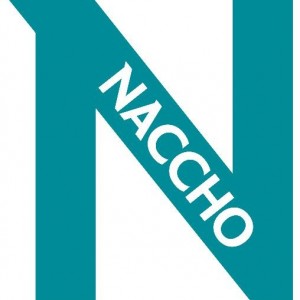By Dr. Peter Jiang, Entomologist, Gainesville Mosquito Control
Gainesville, FL is known as “The Swamp” not only because of the University of Florida, but also because of its swampy areas in the city that breed mosquitoes year-round. Gainesville Mosquito Control (GMC) covers 65 square miles, and a substantial increase in several mosquito species since 2017 meant we needed to dramatically increase the efficiency of our program.
Just south of the city limit, Payne’s Prairie has large populations of invasive plants, primarily water lettuce and water hyacinth. These plants are specific hosts for Mansonia tittilans, a vector of Eastern equine encephalitis virus (EEEV) and Saint Louis encephalitis virus (SLEV). High water levels the past two years, which are expected to hold for several more years, have contributed to substantial increases in the invasive plant species throughout the prairie.
We knew we needed to improve our program efficiency to better tackle the increases in mosquito populations throughout the city
The majority of our resources during the summer and fall of 2018 were spent combating Mansonia species that had migrated north into the city limits. Between 2017 and 2018, we had a 662% increase in total Mansonia species collected in CDC traps. Additionally, in 2018, 3 crows and 25 sentinel chicken were positive for West Nile virus (WNV), 8 chickens were positive with EEEV, and 1 with Highlands J virus (HJV).
With a population density of over 2,200 people per square mile, and an 8% growth in population between 2010 and 2018, service calls increased dramatically. We knew we needed to improve our program efficiency to better tackle the increases in mosquito populations throughout the city, and to better target problem areas within the city limits.
Knowing we needed additional resources and skills to better serve our community, we began searching for an answer to our problems. Somehow, we needed to add additional traps and increase trap efficiency, improve our mosquito identification skills, develop equipment innovations, and establish a public outreach program to educate citizens.

GMC innovated a mounting bracket from materials received from City Surplus. The bracket allows the thermal foggers to be mounted to the ATV.
We began making small improvements to our program, but being the only mosquito control program in the county, there was little opportunity for direct collaboration with other mosquito control programs. We soon learned about the NACCHO and CDC Vector Control Collaborative (VCC), which matches smaller mosquito control programs with an established program. The established program provides guidance, resources, and recommendations to increase smaller programs’ capabilities. We were awarded the NACCHO VCC grant in early 2019 and matched with Anastasia Mosquito Control District (AMCD) in St. John’s County, FL as our mentor.
AMCD has one of the largest programs in Florida, and they were very gracious and forthcoming with their knowledge and experience. We were able to quickly establish an action plan to target areas of our program that we wanted to improve or expand. AMCD invited us to tour their facility, and work with individual departments to gain specific knowledge that would directly benefit our program. We received hands-on training for setting up a pesticide resistance testing program, and GMC employees were able to shadow AMCD employees for training in mosquito identification, special trapping, mosquito pools, public education, and equipment maintenance and fabricating.
Within a few months, we developed an ATV mount for thermal foggers, increasing our production rate from approximately 35 acres treated per hour to 96 acres per hour, while greatly reducing some of the job hazards. This change alone is saving the city about $2,150 per year in efficiency. GMC improved and innovated new CDC light traps that can hold dry ice twice as long, saving money on dry ice expenses. We were also able to increase our trapping sites and available traps for use in the field.
Our program has already begun creating user manuals about our trap and equipment developments, so other mosquito control programs can make the same improvements on a budget.
With the aid of the VCC and our partnership with AMCD, GMC was able to establish our pesticide resistance testing program to elevate our surveillance capacity and to improve and develop new methods, designs and applications of existing methods for mosquito control. Through these innovations, GMC is able to deviate from routine mosquito control practices by thinking outside the box and challenging the status quo.
We now routinely test field-collected mosquitoes for pesticide resistance. Mosquito identification training has allowed all employees to identify mosquitoes both in the field and the laboratory. We’ve increased our public outreach, and in 2019, we made 15 visits to local schools in the area. New PowerPoint and educational materials were created, as well as lesson plans, posters, and displays. Our program has already begun creating user manuals about our trap and equipment developments, so other mosquito control programs can make the same improvements on a budget.
This was a successful pairing that was the direct result of collaborative efforts. Our program’s participation is a great example of “a little help goes a long way,” showing that by combining resources and knowledge, improvements and benefits can be seen on both sides.\
Check out another story from the Vector Control Collaborative.







